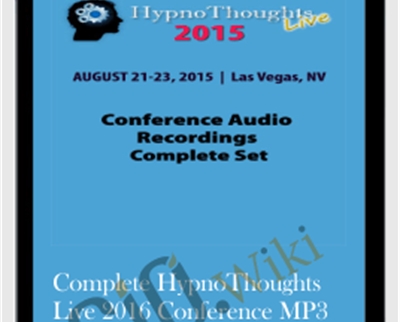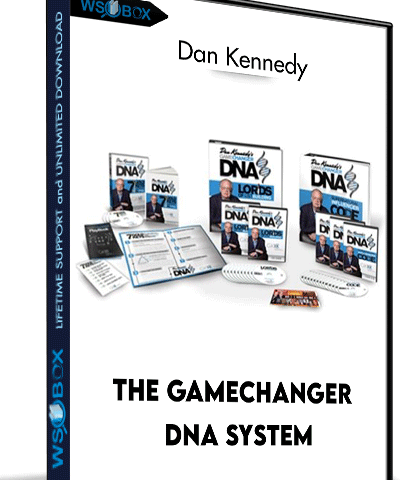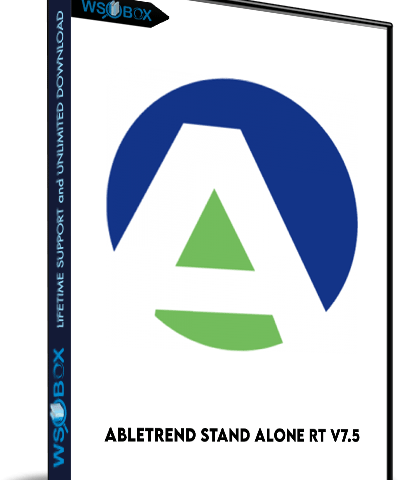Treating the Traumatized Child and Family: 7 Essential Assessment and Treatment Techniques – Scott Sells
$84.00
Full Day
Young clients are often referred to therapy because of an overt behavior problem – acting out, shutting down, skipping school, self-harm, aggression, running away – not the underlying trauma and unhealthy family dynamics that are the real cause of the problem. And while you can make some progress individually, lasting change is unlikely when the child returns to the same unhealthy dynamic at home.
Description
Purchase Treating the Traumatized Child and Family: 7 Essential Assessment and Treatment Techniques – Scott Sells Course at eBokly. We actively participate in group buys and are committed to sharing knowledge with a wider audience. What's more, our courses maintain the same quality as the original sale page. You have the option to buy directly from the sale page at the full price (sale page link is provided within the post).
Young clients are often referred to therapy because of an overt behavior problem – acting out, shutting down, skipping school, self-harm, aggression, running away – not the underlying trauma and unhealthy family dynamics that are the real cause of the problem. And while you can make some progress individually, lasting change is unlikely when the child returns to the same unhealthy dynamic at home.
Trauma affects the entire family – shouldn’t treatment do the same?
Watch Dr. Scott Sells, founder of the Family System Trauma (FST) Model and creator of Parenting with Love and Limits®, to learn 7 must-have, evidence-based techniques for assessing and treating the traumatized child in a whole new way.
Under Dr. Sells’ expert guidance, you’ll discover how you can:
- Engage and motivate even the most resistant parents and families
- Keep session work focused, strategic, and solution-oriented
- Empower caregivers to improve boundaries, attachment, discipline and communication
- Overcome the most common treatment roadblocks that frustrate you and your client
- Utilize easy to follow handouts and resources to help facilitate change
If you’re treating young people, you need these techniques in your clinical toolbox!
- Differentiate between event-based and interactional trauma as it relates to assessment and treatment planning with the family.
- Utilize therapeutic tools, scripts, and handouts to conduct family therapy with traumatized children more effectively.
- Identify “undercurrents”, or hidden causes of trauma, that are contributing to symptomology within the family to increase the effectiveness of treatment.
- Create clinical treatment plans that are designed to address the specific needs of each client/family.
- Utilize various scaling techniques to evaluate progress in treatment and identify potential risks for relapse.
- Ascertain when it is appropriate to begin active treatment as opposed to stabilization of symptoms to ensure the safety of the child and family members.
7 Essential Assessment & Treatment Techniques
#1 – Psychoeducation: Trauma, Behavior, and How the FST Model Can Help
- Why the Family System Trauma (FST) Model works
- The long-term impact of out of control behavior and an upside-down hierarchy
- What is event-based v. interactional trauma?
- Setting expectations for treatment
- Video case example: ”The police officer who apologies to his family”
#2 – Undercurrents: Help Families Identify the Core Drivers of Unhealed Trauma
- Recognize unhealthy interactional patterns that cause or maintain the trauma
- Root work vs. Weed work: Where you will spend your session time?
- How to inject healthy undercurrents into the family
- Video case example: An out of control mother: villain, victim or hero?
#3 – The 15 Minute Motivational Phone Call: Engage the Family Before Treatment Begins
- 7 questions to quickly motivate and build rapport
- The importance of understanding before persuading
- Avoid the call becoming a therapy session: the “stick and move” technique
- Closing arguments – the most important piece of the call
- Video case example: “Just fix my kid”
#4 – The Stress Chart and Seed/Tree Diagram: Assess and Diagnose Quickly and Accurately
- Using scaling from 0% (no stress) to 100% (total stress) to quickly get to the problem
- Identify four toxic “seeds” that maintain the child’s problem behavior or symptoms
- Assess for the child’s safety stressors (self-harm, suicide, bullying, aggression)
- Identification of seeds and symptoms by child, family and FST therapist
- When to stabilize and when to start active trauma treatment
- Video case example: ”Knowing where to tap” to locate the core trauma drivers
#5 – The Ethnographic Interview: Using Client Feedback to Improve Outcomes
- 5 key questions for the end of each session (and why)
- Why real-time client feedback will improve outcomes
- How to elicit honest responses from clients and families
- Deliver vs. content: It’s not what you say but how you say it
- Video case example: ”We finally feel a part of the treatment”
#6 – Trauma Playbooks: Step-by-Step Strategies that Convert Treatment Concepts to Action
- How to create a customized trauma playbook that:
- Activates the client and family to execute their part of the plan
- Heals the stronghold of shame, blame, performance and approval
- Uses the child’s love language and is easily understood by everyone
- How to adjust playbooks as treatment progresses
- Troubleshooting, dress rehearsals, and next steps
- Video case example: The self-harming teen overcomes the stronghold of shame
#7 – Evaluate Progress and Relapse Prevention
- Mini-scales technique: Reveal progress made on problematic undercurrents
- Map out next steps of treatment and beyond
- Identify red flags to prevent potential relapse
- Video case example: See the mini-scales and decision tree techniques in action
Limitations of the Research and Potential Risks
Get Treating the Traumatized Child and Family: 7 Essential Assessment and Treatment Techniques of author Scott Sells only price 87$
Tag: Treating the Traumatized Child and Family: 7 Essential Assessment and Treatment Techniques – Scott Sells Review. Treating the Traumatized Child and Family: 7 Essential Assessment and Treatment Techniques – Scott Sells download. Treating the Traumatized Child and Family: 7 Essential Assessment and Treatment Techniques – Scott Sells discount.
Purchase the Treating the Traumatized Child and Family: 7 Essential Assessment and Treatment Techniques – Scott Sells course at the best price at eBokly. Upon completing your purchase, you will gain access to the downloads page. where you can conveniently retrieve all associated course files. Additionally, we will send you a download notification email to your registered mail.
Unlock your full potential with our Treating the Traumatized Child and Family: 7 Essential Assessment and Treatment Techniques – Scott Sells courses. Our courses are meticulously designed to empower you with the skills and knowledge needed for excellence.
Why wait? Take the first step towards greatness by acquiring our Treating the Traumatized Child and Family: 7 Essential Assessment and Treatment Techniques – Scott Sells courses today. We ensure a smooth and secure purchasing experience that guarantees your peace of mind. Rest assured that your financial information is safeguarded through our trusted payment gateways, Stripe and PayPal.
Stripe, renowned for its robust security measures, offers a secure and dependable payment process. Your sensitive data is encrypted using state-of-the-art technology, ensuring its confidentiality throughout the transaction.
PayPal, a globally recognized payment platform, adds an extra layer of security. With its buyer protection program, you can make your purchase with confidence, knowing that your financial details are protected, allowing you to focus on your learning journey.
Is it secure? to Use of?
- Rest assured, your identity remains completely confidential. We do not share your information with anyone, ensuring the utmost security when you buy the Treating the Traumatized Child and Family: 7 Essential Assessment and Treatment Techniques – Scott Sells course.
- 100% Safe Checkout Privateness coverage
- We employ robust communication and encryption methods to protect sensitive information. All card numbers are encrypted using AES at rest-256, and the transmission of card numbers occurs in a separate hosting environment, without sharing or storing any data.
How Will the Course Be Delivered?
- Upon successful payment for the “Treating the Traumatized Child and Family: 7 Essential Assessment and Treatment Techniques – Scott Sells course”, Most of the products will come to you immediately. But for some products were posted for offer. Please wait for our response, it might take a few hours due to the time zone difference.
- If this occurs, kindly be patient. Our technical department will process the link shortly, and you will receive notifications directly via email. Your patience is greatly appreciated.
What Shipping Methods Are Available?
- You will receive a download link in the invoice or in YOUR ACCOUNT.
- The course link is always accessible. Simply log in to your account to download the Treating the Traumatized Child and Family: 7 Essential Assessment and Treatment Techniques – Scott Sells course whenever you need.
- You can study online or download the content for better results, making it accessible from any device. Ensure your system does not go to sleep during the download process..
How Do I Track Order?
- We promptly update the status of your order following your payment. If, after 7 days, there is no download link provided, the system will automatically process a refund..
- We love to hear from you. Please don’t hesitate to email us with any comments, questions and suggestions.
You must be logged in to post a review.

 Purchase this course you will earn
Purchase this course you will earn 




Reviews
There are no reviews yet.